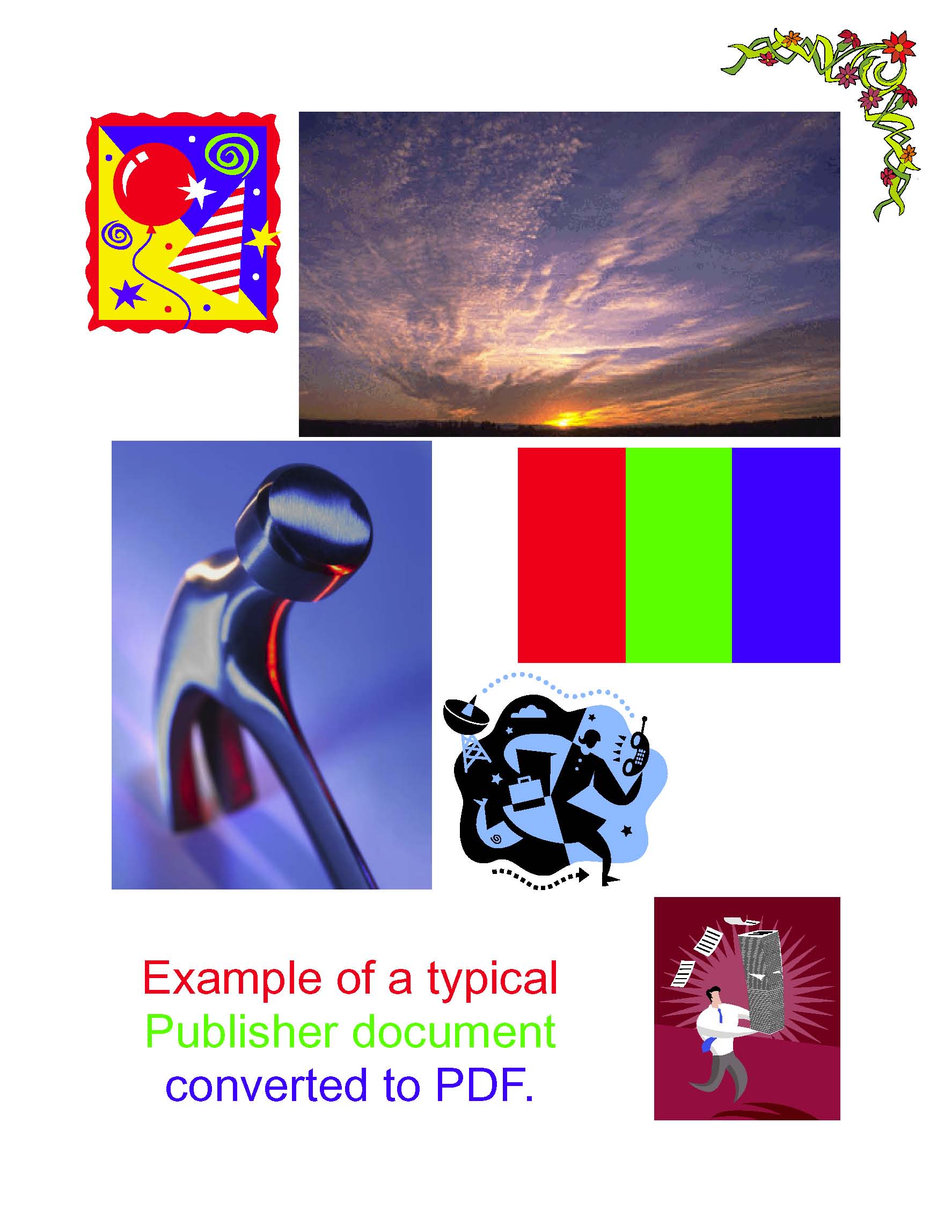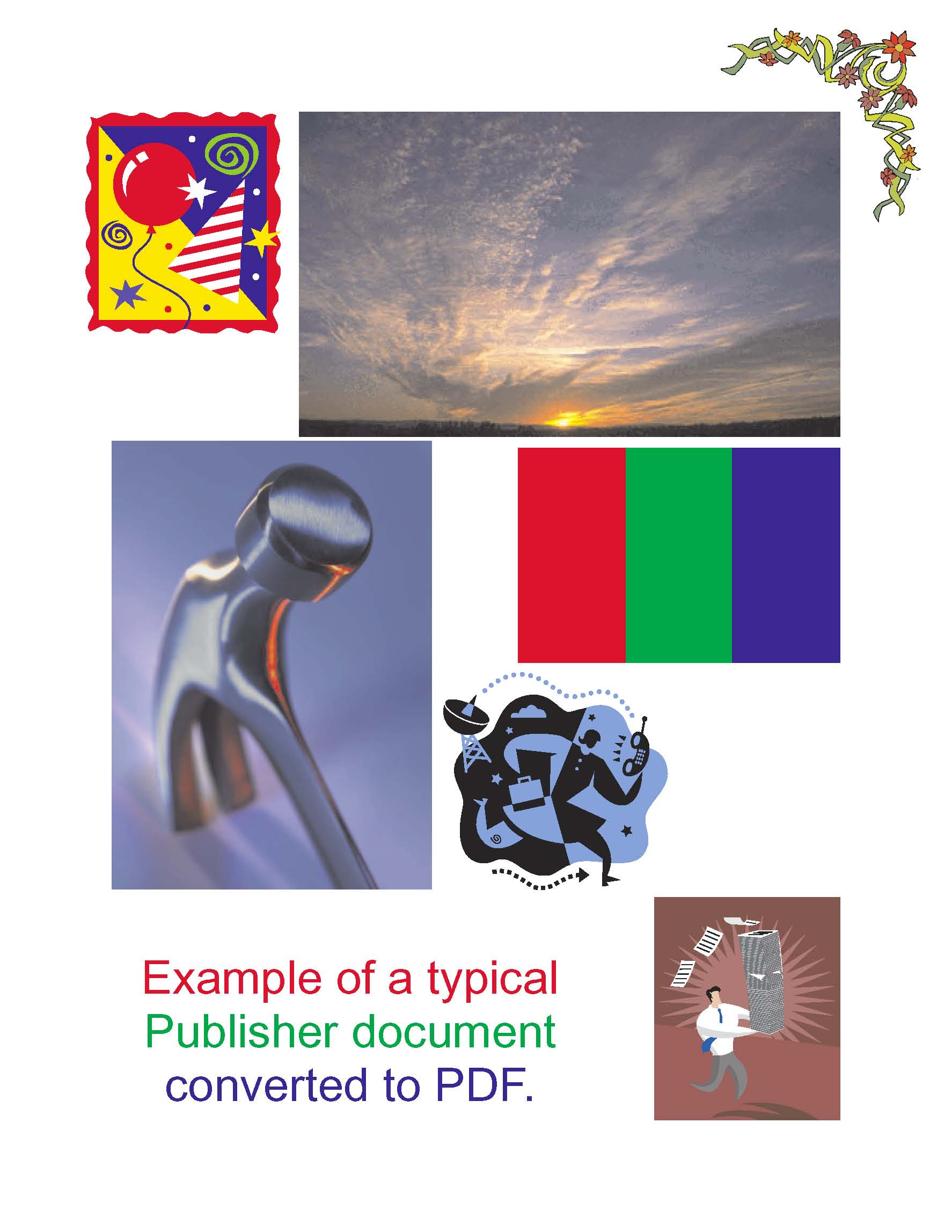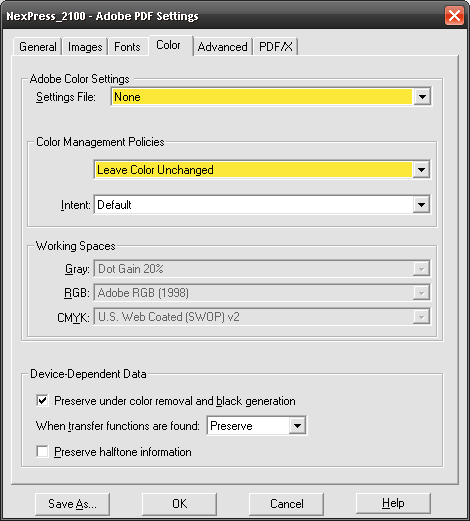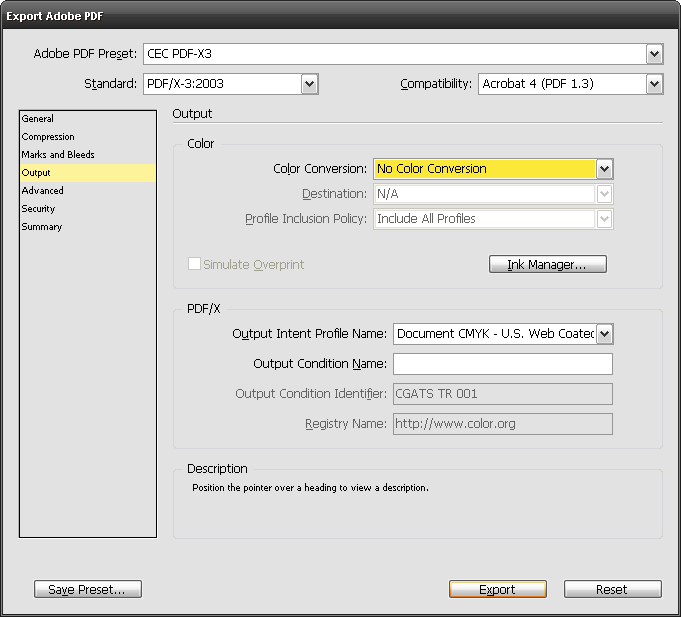A number of our clients use Microsoft Office products to set up their documents. More often than not, they use the default settings for those programs, which tends to mean their files are created in RGB color space. In some cases, even clients using high-end design packages such as the Adobe Creative Suite or Quark Xpress use RGB images or graphics. All of these situations are fine and while the resulting prints will not match on-screen colors exactly, we can often get very similar results. The problem that we frequently encounter is that the color space of the PDF we receive does not match the color space of the original file. This is usually caused by automatic color conversions occurring when the PDF is being created.
Examples
The following images were created in Microsoft Publisher using clipart and images that come free with the Microsoft Office package. The one exception being the red, green and blue vertical bars, which were created by CEC specifically to show a very obvious change that can occur during conversion. They were then output to a PDF with no color conversion (RGB) and again with the color converted to CMYK during the printing of the PDF.
Some differences are quite obvious, blues especially become much more dull or muted when converted to CMYK during the PDF creation process. The image in the lower right corner also shows a major change from a deeply saturated red and pink to an almost tan color combination. Overall, the colors are less vibrant in the converted file.
 |
 |
| RGB output from Microsoft Publisher | CMYK converted output from the same Microsoft Publisher file |
| Click the above images to open a larger version in a new tab/window. | |
(the above images are actually .jpg files for web viewing. The PDFs created from Publisher were saved as JPGs for viewing on the website, but no color change occurred while saving to JPG files.)
Cause Of Confusion
In some cases, the color conversion is intentional. When we see a file is RGB, often we’ll let the client know so they can fix it (if their original file was not RGB), or at least be aware that some of the colors may not reproduce well in a printed piece. With this knowledge, some people decide to convert their images automatically, all at once, using the PDF color management settings when they create the PDF. Similar results can occur using automatic conversion in any application, not just when distilling PDF files. While our digital color press does print in CMYK, it handles RGB colors very well and often the results are considerably better than auto-converting the colors to CMYK in another application/process. The general rule is: Leave the colors unchanged. If they started out RGB, leave them as RGB. If they started CMYK, leave them CMYK, etc…
The Proper Setting
 |
 |
| Color settings in Adobe PDF print driver | Color settings when Exporting to a PDF from Adobe InDesign |
| Click the above images to open a larger version in a new tab/window. | |
The wording will vary somewhat depending on the application and version you’re using, but typically this setting can be found in the PDF options under the “Output” section. Set “Color Conversion” to: “Leave Color Unchanged”. If there is a “Color Management” option, and you haven’t specifically set everything up using a particular color profile, leave color management off. Alternatively, if you’re creating your PDF by printing to the Adobe PDF Printer or to a Postscript file for conversion with Acrobat Distiller, The “Settings File” should be set to “None” and the “Color Management Profile” to “Leave Color Unchanged”. Again, the terminology might vary depending on what version of Distiller/Adobe PDF Printer you have installed.
The Last Step For Creating PDF Files
Check your resulting PDF. We’ve mentioned this in previous blogs as well, but this is probably the most important tip we can offer to anyone sending PDF files to CEC for printing. Always open the PDF file once it has finished exporting/printing/distilling. If you expect a blue sky from your native file to print blue, but in your PDF it is purple, chances are that sky will print purple.
One final note; it is possible to manually convert images from one color space to another with very pleasing results. The issues discussed above refer to the basic, automatic conversions that we see used most often. If it is extremely important, you can always take the images into an image editing program, such as Adobe Photoshop, and manually convert them, taking time to adjust the settings to more accurately recreate the most important colors. Obviously, this can be a time consuming process. Even automatic conversions can work well for some images or if the settings are adjusted properly. But in a multi-page document with multiple images on each page, even auto-converting each individual image can require a substantial amount of time. Hence, most people use automatic conversions and apply them to an entire document all at once using default settings, often never looking at the results until they receive a printed proof.
If you’re having trouble creating a PDF file for CEC that looks the same as your native file, don’t hesitate to contact us. We’ll be happy to offer some assistance to help you come to the desired result.





